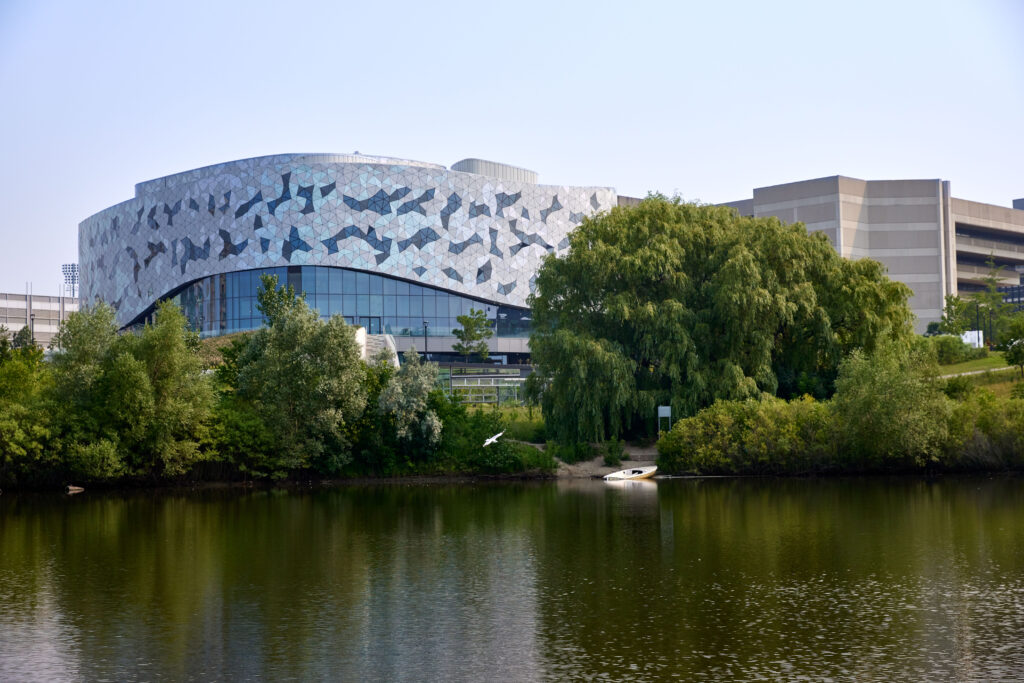
York University's masterplan and campus vision calls for the university to promote sustainable capital projects and building design. York is constantly updating and constructing new buildings to be with national and international green building designs promoting water efficient planting and plumbing, low emissions construction, reduced energy usage, promoting sustainable land redevelopment, usage of recycled building materials and green technologies as well as encouraging sustainable modes of transportation. York seeks to meet the local requirements of Toronto Green Standard (TGS) which is Toronto’s sustainable design and performance requirements for new developments since 2010.
York has 1.2 million square feet of green buildings, including 7 buildings currently certified for Leadership in Energy and Environmental Design or LEED®. LEED is an international symbol of sustainability excellence and green building leadership. LEED’s proven and holistic approach helps virtually all building types lower carbon emissions, conserve resources, and reduce operating costs by prioritizing sustainable practices. 2 more of York's buildings are up for LEED certification.
The Second Student Centre is LEED Gold-certified through sustainable design features including green roofs and permeable landscape surfaces to reduce heat gain and aid storm water management, native, water-efficient planting and plumbing fixtures, bicycle parking and showers to encourage alternative modes of transport, reduced energy use through envelope and mechanical systems’ design and lighting controls, and the appropriate selection of materials for improved indoor air quality.
Schulich’s Rob and Cheryl McEwen Graduate Study & Research Building received LEED Gold certification in April 2021. The 67,000-square-foot building is one of the first in Canada to use the principles of thermally active building systems. One of the building’s core features is a dramatic glass solar chimney that stands 27 metres in height and provides passive natural ventilation for the entire facility. The Rob and Cheryl McEwen Graduate Study & Research Building was named a recipient of The Ontario Association of Architects (OAA) Design Excellence Awards last year in recognition of its architectural excellence, creativity and sustainable design. The building also received a Canadian Green Building Award in 2020 for its sustainable design, architectural excellence and technical innovation.
The Life Sciences Building at York University is a state-of-the-art academic and research facility that completes the “Sciences Quadrangle” at the Keele Campus. The building’s landscape was designed to address the unique functional requirements of the building while creating an important gathering space on the campus. The landscape incorporates several innovative sustainability initiatives that are integrated with internal building functions including a rainwater harvesting and filtration system that supplies water for flushing and cleaning of laboratory areas, an on-site stormwater attenuation, filtration and infiltration systems, a green roof and high reflectivity paving materials.
The landscape compliments the architecture by reflecting the colours and forms of the façade. The interior functions extend outwardly from the existing chemistry building into the Sciences Quadrangle into the landscape that integrates art and symbolism to inspire and motivate.
For more information on York's sustainable planning, see Keele Campus Vision and Strategy.
